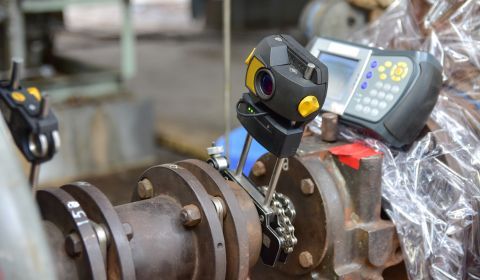
The Safety Factor Of Coupling Selection
- Written by: info@dhp-corp.com.vn on
- Shaft Couplings
- - 0 Comments
When selecting the right coupling, engineers need to consider many aspects, such as the type of installation, primary and secondary connections, available installation space, ease of installation and disassembly, maximum rotational speed, and the coupling's resilience. To ensure safety and efficiency, they also consider a safety factor, also known as a safety multiple, to compensate for physical parameters or unknown variations.
1. What is a safety factor?
The safety factor accounts for increased torque conditions. According to API 671, a service factor of 1.5 times the normal torque is recommended for "off-design" conditions, considering factors like low-temperature driver output and compressor fouling.
Different applications require varying safety factors. For example, gas turbine-driven compressors run more smoothly than reciprocating pumps. Service factors should apply to continuous operating conditions, not short-term scenarios.
A safety factor indicates the damage limit of a component, guiding engineers in selecting the appropriate factor. The coupling's damage limit is usually higher than the theoretical limit based on static or dynamic calculations. Factors like environmental impacts, shocks, and vibrations are considered. Safety factors typically range from 1.1 to 2.1, with critical components like elevator cables reaching up to 10. Conservative estimates by engineers often enhance safety.
2. How do you calculate the safety factor?
For a detailed dynamic test, engineers can select coupling sizes based on torsional vibration analysis. Specific operating conditions can be simulated, such as start-up procedures or blocking situations. But in most cases, the choice is based on an estimate of the torque size of the engine, depending on the uniformity of the torque absorption with a general safety factor of Ss = 1.4 - 1.6. The following applies:
- Safety factor Ss = 1.4 for small cyclic variation coefficients, for example, multi-cylinder diesel engine generator drives.
- Safety factor Ss = 1.6 for larger cyclic variation coefficients, for example, diesel engine compressor drives.
To select the right couplings, engineers need to consider the following factors:
- The couplings must be suitable for the specific installation type of the system.
- Ensure that the coupling can connect components accurately and safely.
- Select the coupling based on the available installation space to avoid complicated installation.
- Couplings should be easy to install and remove to save maintenance time and effort.
- Couplings should be able to withstand maximum rotational speeds and be able to recover from force impacts.
3. The Safety Factor in Coupling Design
Unlike service factors, the safety factor of couplings is an integral part of the design process. Designers incorporate safety factors to address uncertainties in modeling stress loads. Since analytical methods involve approximations, calculated stress values may not be exact. Furthermore, material properties—including modulus, ultimate strength, and fatigue strength—have inherent tolerances that must be considered.
Modern disc and diaphragm couplings offer better stress analysis than gear couplings, as they allow more precise calculations of misalignment, axial displacement, and torque loads. Computational tools like finite element analysis (FEA) have improved accuracy significantly, reducing uncertainty in design. Additionally, advancements in material science have led to higher control and consistency in performance, allowing today’s couplings to operate reliably with lower safety factors compared to those designed 25 years ago.
4. Torque vs. Misalignment in Coupling Failure
In gear couplings, torque is the primary contributor to stress, making it a key factor in their design. However, in flexible-element couplings, safety fatigue factors are generally less influenced by torque, as the primary failure mode in dry couplings is not highly sensitive to torque during continuous operation. Instead, misalignment—both axial and angular—tends to be the dominant cause of failure.
With numerous variables influencing gear coupling performance, including tooth form, surface finish, material properties, temperature, and lubrication, accurately predicting their lifespan is challenging. This is one reason why gear couplings are now rarely used in critical equipment, as more reliable coupling options are available today.
5. Where to buy reputable Ringfeder Germany couplings?
If you require couplings but do not know how to choose the right one, contact Dai Hong Phat Corp today, and all your problems will be solved. We are committed to providing the best products and services, because:
- Dai Hong Phat Corp is An Authorized Distributor of Ringfeder Germany in Vietnam and some countries in the region.
- Dai Hong Phat Corp has a team of professional technicians who are always ready to advise customers in choosing couplings.
- Genuine coupling products are imported from Ringfeder Germany, against counterfeiting and providing full and clear CO / CQ.
- Goods are always available in stock, fast delivery, minimizing machine downtime.
---------------------------------------------------------------------------------------
Contact Dai Hong Phat Corp today to learn more!!
Website: https://ringfeder.com.vn/ - https://daihongphat.asia/
Hotline: 0906 955 057 | Zalo: +84 906 955 057
Email: info@dhp-corp.com.vn
Facebook: https://www.facebook.com/khopnoitrucdaihongphat







 Instagram
Instagram
Write a comment